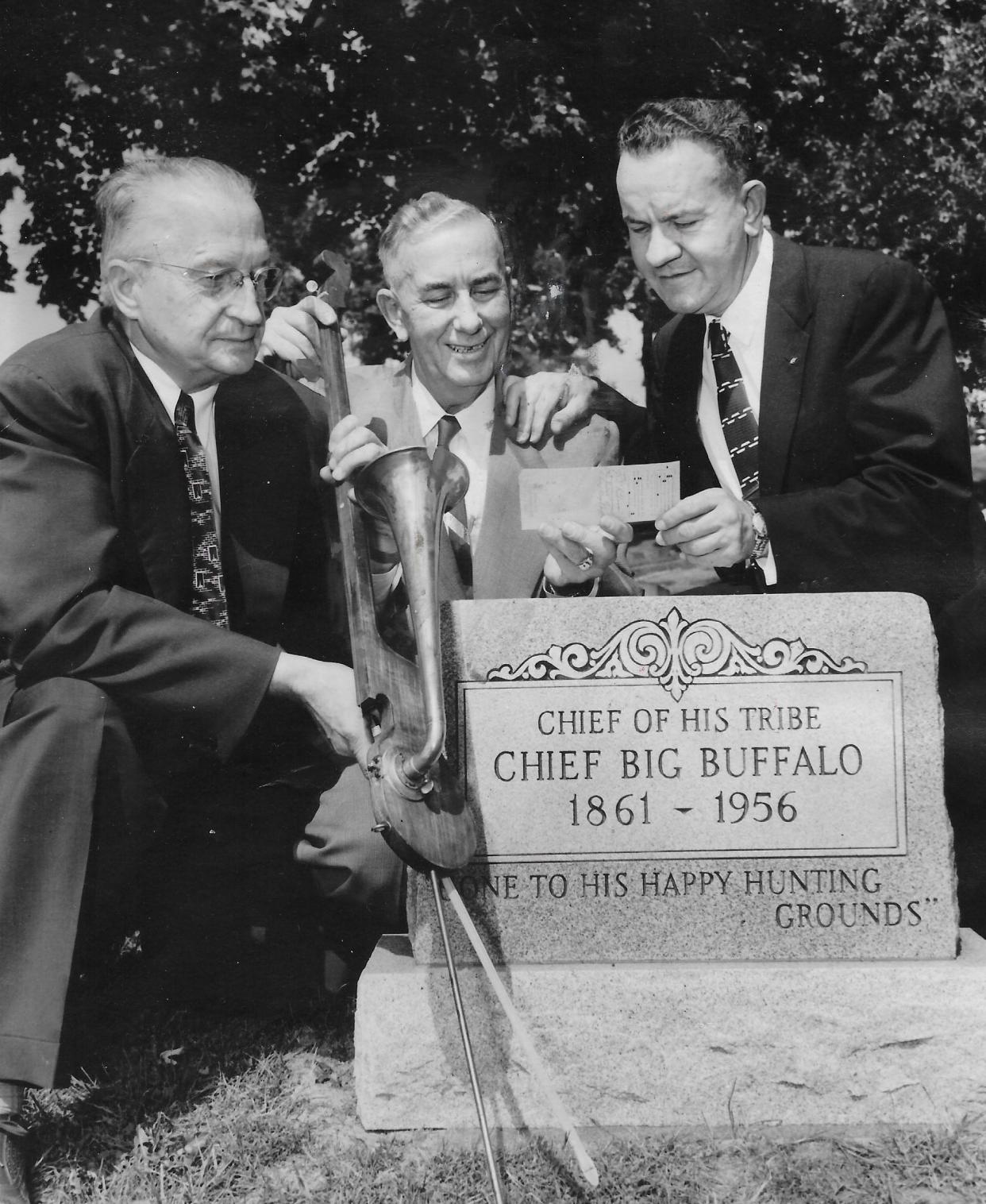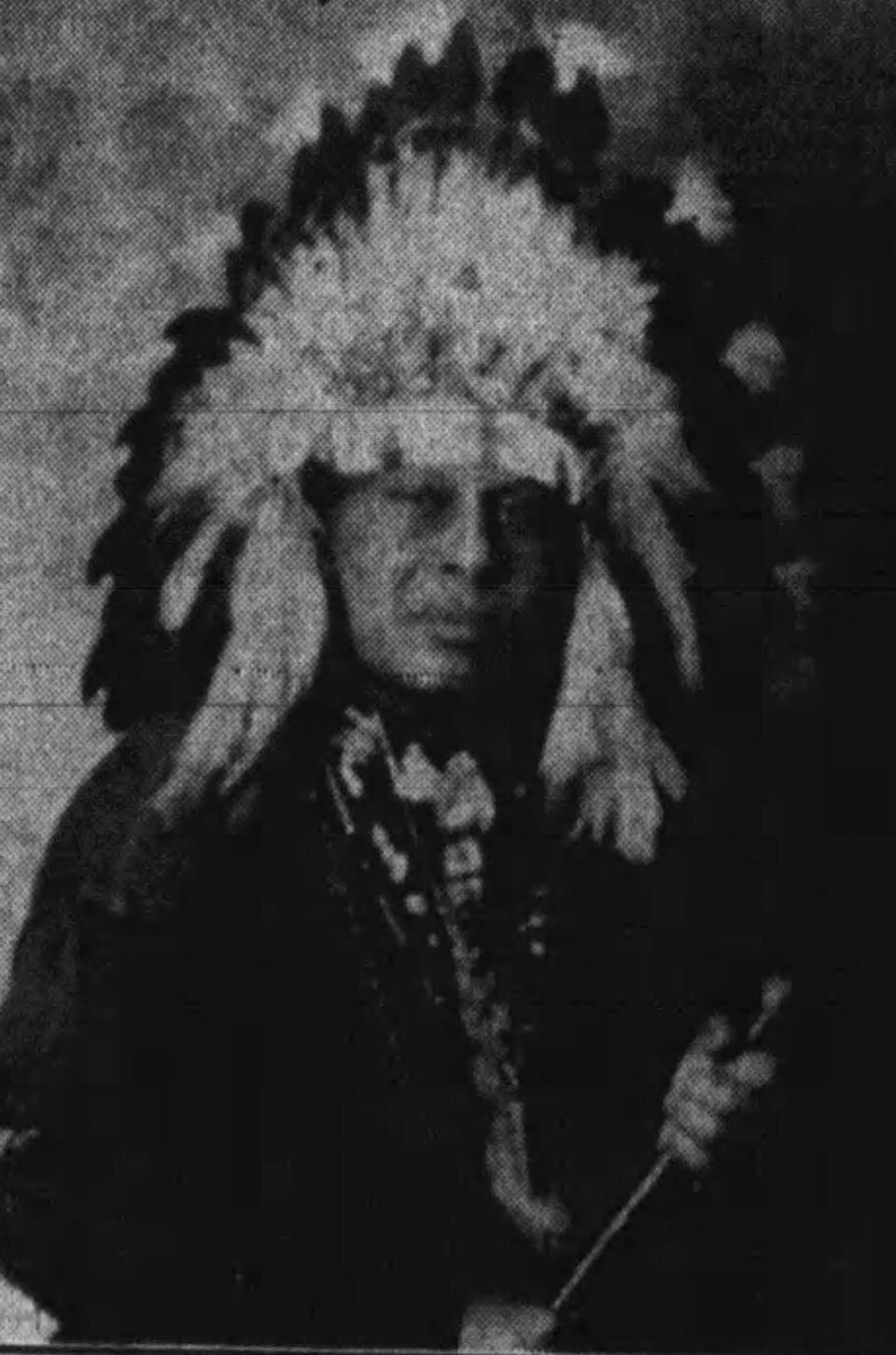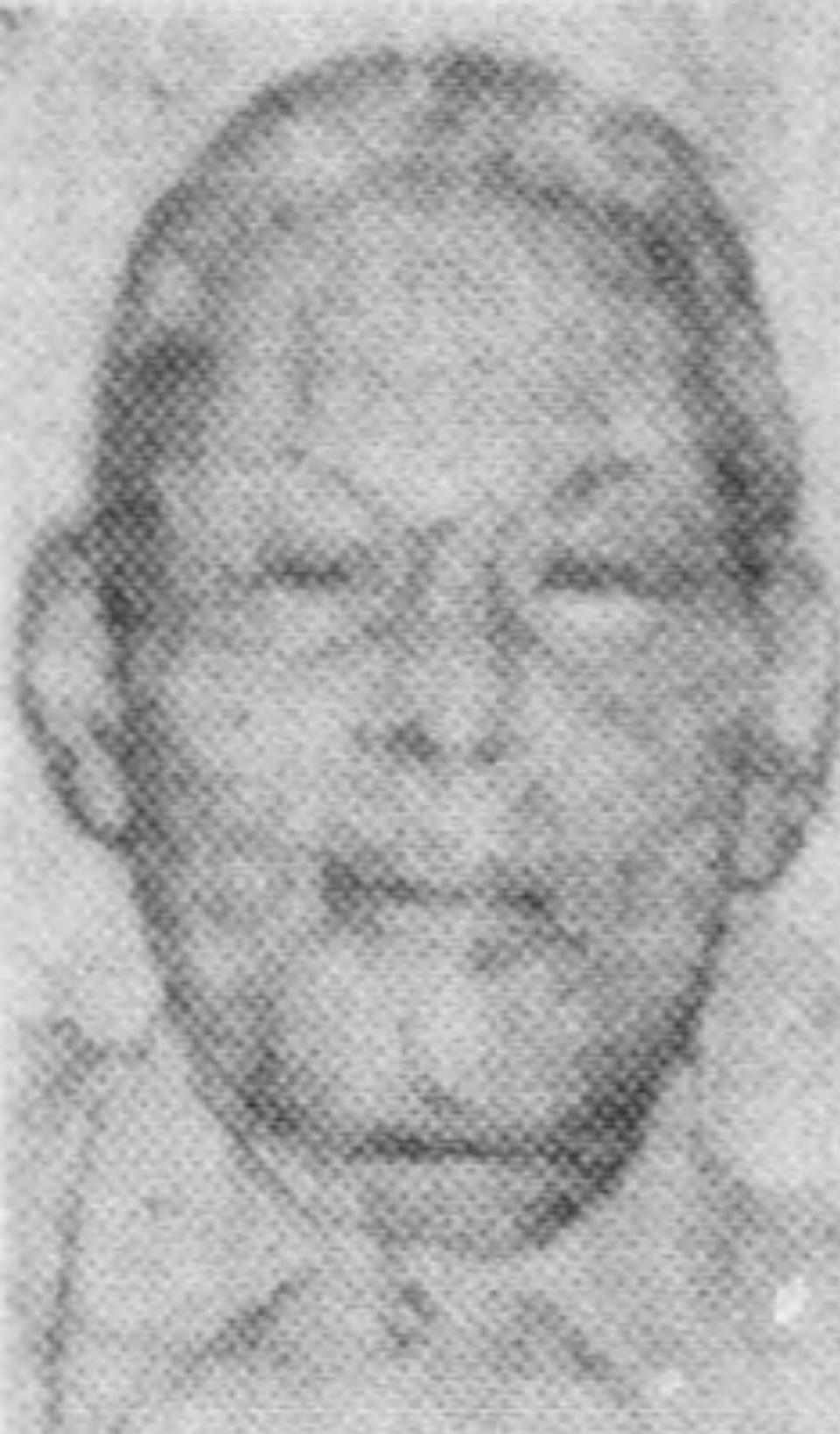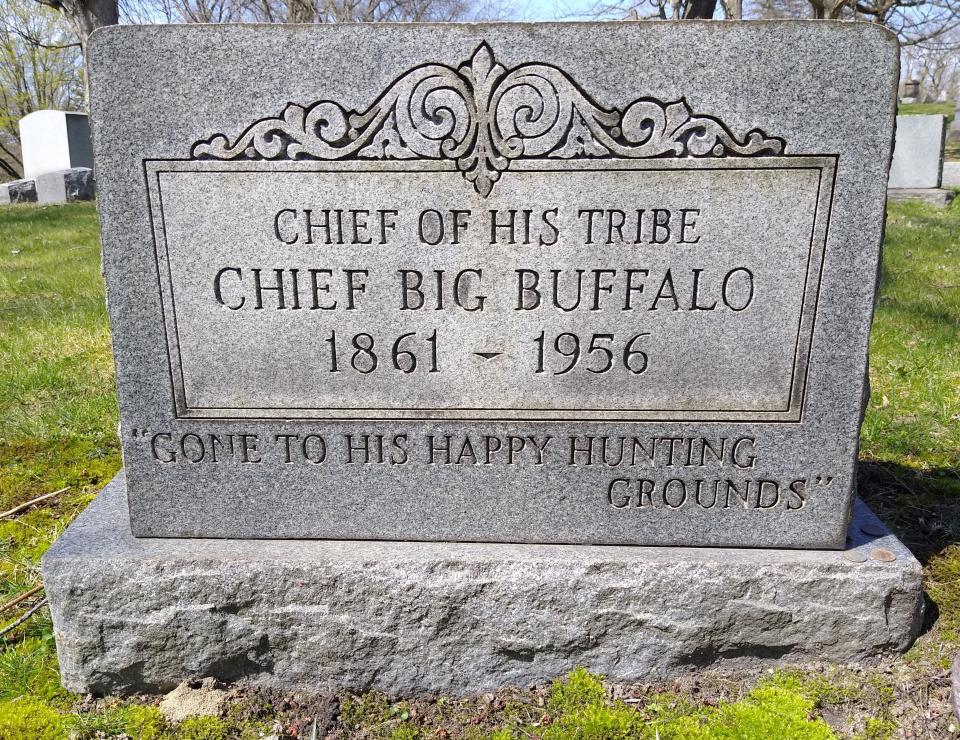Local history: Chief Big Buffalo is buried at Glendale Cemetery. Who was he?

- Oops!Something went wrong.Please try again later.
- Oops!Something went wrong.Please try again later.
Chief Big Buffalo was a professional entertainer so it’s possible that he embellished his biography for publicity’s sake. If he experienced half of the things he claimed, though, he lived a most interesting life.
The Cherokee Indian spent his final years in Akron, working as a custodian at Glendale Cemetery and reminiscing about his glory days as a performer.
He died of natural causes April 26, 1956, reportedly at age 95, in a downtown rooming house at 62½ S. Howard St. The landlord sifted through the lodger’s meager belongings and found interesting artifacts, including an unusual musical instrument and tattered newspaper clippings.
“He was a wonderful fellow to have around, always singing while he worked,” Glendale Superintendent Edgar Warren told the Beacon Journal at the time. “I suppose I got to know him better than anybody around here. He told me he used to have plenty of money and I believe he did. He acted like he had known the better things of life.”
Chief Big Buffalo told Akron acquaintances that he was born in Colorado in 1861. However, he gave the year as 1879 to a U.S. census taker, indicating that he was 18 years younger than he wanted people to believe. Maybe he stretched the truth in other areas.
Buffalo Bill had Wild West shows
Was he really a chief or was that a stage name? He claimed to have been living on a reservation when William F. Cody, better known as Buffalo Bill, came to recruit Indians to appear in a Wild West show. The famous troupe toured the country and featured such real-life figures as Sitting Bull, Annie Oakley, Wild Bill Hickok, Red Cloud, Pawnee Bill and Buck Taylor.
The chief later appeared in circuses, rodeos, vaudeville halls and movie Westerns. In the 20th century, he moved to the East Coast and became a featured act in shows sponsored by “Believe It or Not” cartoonist Robert Ripley.
More: Believe it or not! Akron appears often in Ripley’s famous cartoon
Chief Big Buffalo walked onstage in ceremonial attire with a feathered headdress. He played a one-string violin, a maple instrument with a brass horn attached, as well as musical saws in which he created delightful sounds with the aid of a bow. He also demonstrated traditional dances, re-created bird whistles and led singalongs of popular songs.
A clipping from The New York Times noted that Chief Big Buffalo performed before three presidents: William Howard Taft, Woodrow Wilson and Calvin Coolidge.

The chief was a featured act in the Jack Case Rodeo when it galloped into New Jersey in 1935.
“His imitations of birds, animals and various forms of wildlife are his specialty,” the Bayonne Times reported. “Many refuse to believe that the sweet tunes he causes to reverberate from a rusty saw which he constantly carries with him are genuine. In tone it represents the strains of a highly tuned harp.”
A year later, he entertained the Parent-Teacher Association of Our Lady of Victory School in White Plains, New York.
“The program consisted of Christmas plays presented by the various classes, the singing of hymns and carols by the children, and ‘Chief Big Buffalo’ of the Cherokee tribe who danced an Indian war dance, gave imitations of train whistles and birds, and played on a musical saw ‘East Side, West Side,’ “Let Me Call You Sweetheart’ and ‘Long Ago,’ in which the audience joined,” the Daily Argus reported.
In 1937, he performed before junior high school students in Mamaroneck, New York.
“Chief Big Buffalo, a triple tone whistler, whistled ‘Mother Machree’ and ‘Let Me Call You Sweetheart,’ ” the Daily Times reported. “He played ‘Aloha’ on the one string violin and sang ‘On the Trail of Long Ago.’ The chief also danced a combination of the war dance, the buffalo dance, and the eagle dance. Chief Big Buffalo has played in the moving pictures, among them one of W.C. Fields’ pictures.”
Coney Island acts came to Akron
By the 1940s, the chief was entertaining audiences in a circus sideshow at Coney Island in New York, and that’s ultimately what brought him to Ohio. Summit Beach Park in Akron booked the Coney Island acts to appear for a summer engagement in 1944.
“Fun for everyone from 6 to 60!” Summit Beach advertised.
Chief Big Buffalo shared the stage with the Great Gravito, a magician; Ming Toy, a Chinese juggler; Francois Bedard, a French painter; and one-named Marlena, “The Girl With the Iron Tongue.” Other acts that summer included trained Australian cockatoos and a boxing ring of cats wearing little gloves.
Perhaps performing with boxing kittens was the last straw. When the show left Akron, Chief Big Buffalo stayed.

“He liked the city so well he decided to settle here,” Glendale Superintendent Warren explained in 1956. “I employed him as a janitor at the office building here in the cemetery but he was then too old to do much.”
The chief worked at the cemetery for a decade, living in a rooming house at the former Eagle Hotel on South Howard Street near West Mill Street, a site occupied today by the Akron Centre Parking Deck.
The Cherokee declined to accept relief or go live at the county home for the aged. He worked at the cemetery for as long as he could.
“He kept hoping for a break so he could get back into show business,” Warren said.
Alas, there was no comeback. Chief Big Buffalo died in his room, surrounded by personal effects that held special meaning to him.
Savings bond paid for headstone
A memorial service was held at Adams Funeral Home with interment at Glendale Cemetery, just down the lane from the office where the chief had worked.
While cleaning out the room, landlord Henry King discovered the single-string violin and newspaper articles about the chief’s career. He also found a $100 savings bond, which today would be worth $1,100.
King turned the bond over to Summit County Humane Officer Clarence Blosser, the court-appointed administrator of the estate. The never-married entertainer had no known heirs, so Blosser used the money to buy a headstone for the Glendale grave.
Superintendent Warren supervised the installation of the monument Sept. 13, 1956, in Section 27, Lot 2. Blosser presented the $100 bond to Warren as part of the ceremony.
Akron planning engineer Leonard Hiebel, vice president of the Summit County Historical Society, accepted the one-string violin for preservation.
“We thought a lot of the chief around here,” Warren said.

Over the decades, the grave has become a point of interest at Glendale. Visitors have stopped to take pictures and pay tribute to the Cherokee Indian, leaving behind coins and other trinkets.
The epitaph on the monument:
CHIEF OF HIS TRIBE
CHIEF BIG BUFFALO
1861-1956
“GONE TO HIS HAPPY HUNTING GROUNDS”
Mark J. Price can be reached at mprice@thebeaconjournal.com.
More: Civil War veteran’s headstone unearthed at Glendale
More: Have you seen it? Bronze ornament stolen from soldier’s grave
This article originally appeared on Akron Beacon Journal: Chief Big Buffalo’s grave is a point of interest at Glendale

